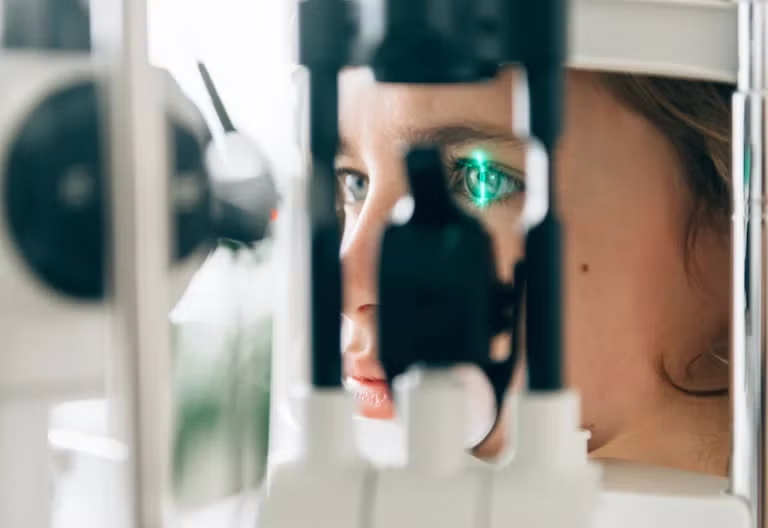
It’s been a long time since the inception and invention of eye correction. Technology has brought us many innovations since the invention of glasses, and there have been even more innovations over the last few years regarding eye correction procedures. Here are some fantastic ways we now use technology to improve vision and vision correction procedures.
Intraocular Lenses
Intraocular lenses replace the eye’s natural lens. This technique is used frequently in cataract surgery. The cataract is removed and replaced by the intraocular lens (or IOL). The new lens is made of plastic. Though very effective in cataract surgery, this procedure is also used in many other vision correction procedures. It can treat near-sightedness, age-related far-sightedness, and other eye issues.
Implantable Contact Lenses
In this procedure, the natural lens of the eye is not replaced. Rather, a corrective lens is placed on top of the natural lens through a tiny incision. This can treat near-sightedness and astigmatism and is a wonderful option for individuals for whom LASIK eye surgery is not an option due to thin corneas or dry eyes.
Lasik
Laser Eye Surgery, or LASIK, is a minimally invasive vision correction procedure. It has a fairly brief recovery time and can be used to treat near-sightedness, far-sightedness, and astigmatism. LASIK offers a full, permanent correction of vision, which can be very appealing to patients, and consequently, it is a very popular procedure.
Corneal Cross-Linking
This procedure is used primarily to treat keratoconus, a condition characterized by thin and weak corneas. It is a natural treatment that uses B12 drops and UV light to strengthen the cornea. Although this isn’t a painful procedure, lingering pain is a possible after-effect.
Femtosecond Laser
Widely used since the early 2000s, the femtosecond laser is very effective in treating cataracts. It can also be used for any eye issue that causes clouding of the lens. It is seen as the most advanced, cutting-edge technology for removing cataracts.
Optical Coherence Tomography, or OCT
Optical Coherence Tomography is an innovative, non-invasive imaging technology. It is essential in diagnosing macular degeneration, diabetic retinopathy, and glaucoma. It sends light waves to the back of the eye and measures the retina. This allows eyecare experts to measure the thickness and quality of the retina. This advanced technology can identify relatively minor changes in the retina, allowing for very early intervention.
Conclusion
With so many advanced technologies that help with vision correction, it makes sense to see your eye doctor regularly. Between early detection, non-invasive testing and procedures, and fully restorative techniques, it just makes sense to schedule regular eye exams and stay on top of your vision health.
Spindle Eye Associates
If you’d like more information about the latest technologies that improve vision correction procedures, it’s time to schedule with Spindle Eye Associates. With four locations in the New Hampshire area, we are available to see patients in Derry, Londonderry, Windham, and Raymond. For more information, visit our website or call (603) 217-2583.
- Allergies and Dry Eyes2
- Astigmatism5
- Bifocal Contact Lenses1
- Cataracts15
- Children6
- Contact Lenses17
- Contacts6
- Cosmetic Eye Procedure1
- Cosmetic Surgery1
- Crizal Prevencia1
- Diabetes3
- Dry Eye Syndrome Manchester4
- Dry Eyes24
- Effects of Exercise1
- Eye Care45
- Eye Disease3
- Eye Doctors17
- Eye Exams31
- Eye health44
- Eye irritation7
- Eye Strain3
- Eye Syndrome1
- Featured Post8
- Financing Options1
- Glasses20
- Glasses or Contacts1
- Glaucoma12
- Infographic3
- IPL3
- Lasik28
- LASIK Surgery23
- Lip Care1
- Macular Degeneration4
- Ocular Diseases2
- Pulsed Light Therapy1
- Refractive Errors1
- Spindel Eye2
- Spindel Eye Reviews16
- Sunglasses2
- Top-Tier Awards1
- Trifocal1
- Vision Care13
- Winter eyecare1
- Winter glare1
